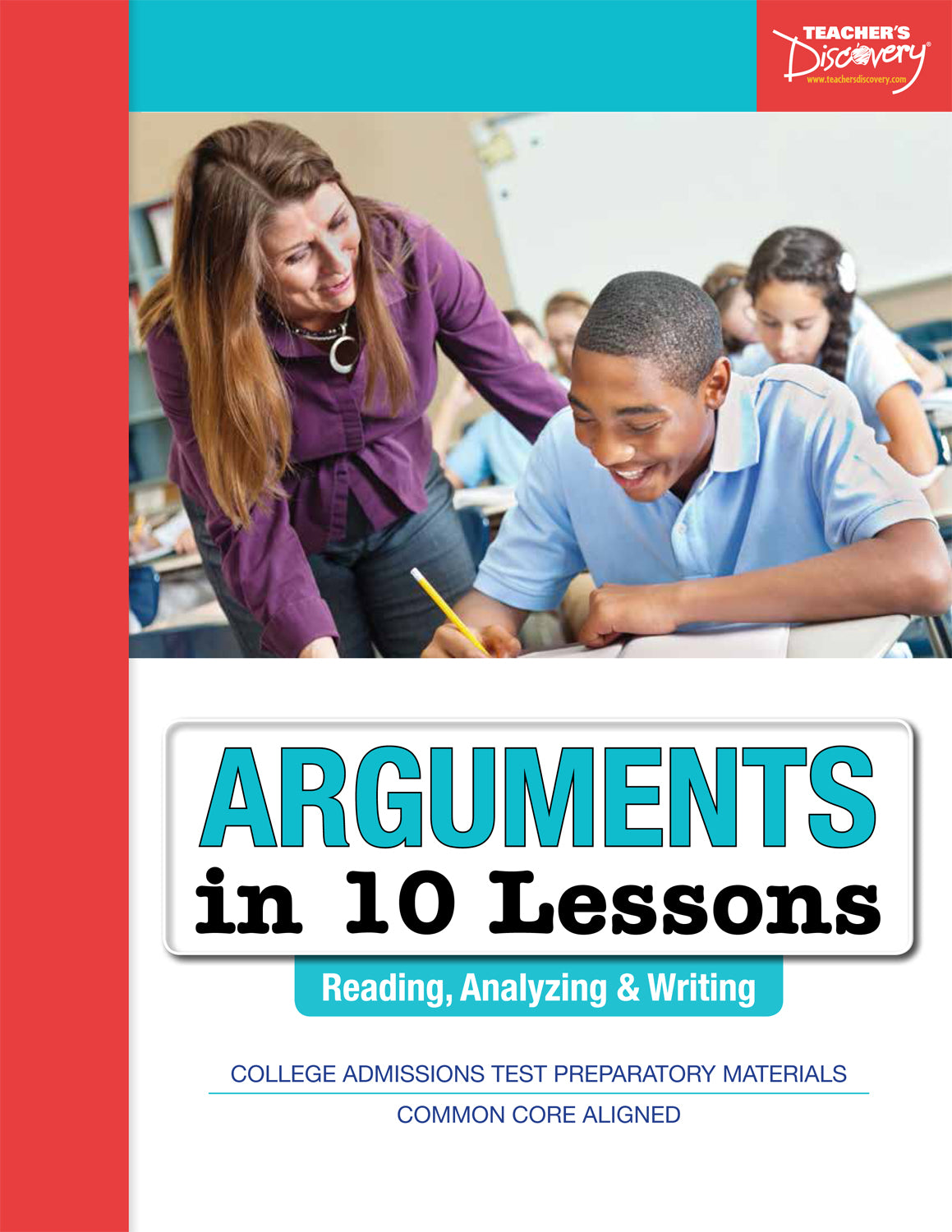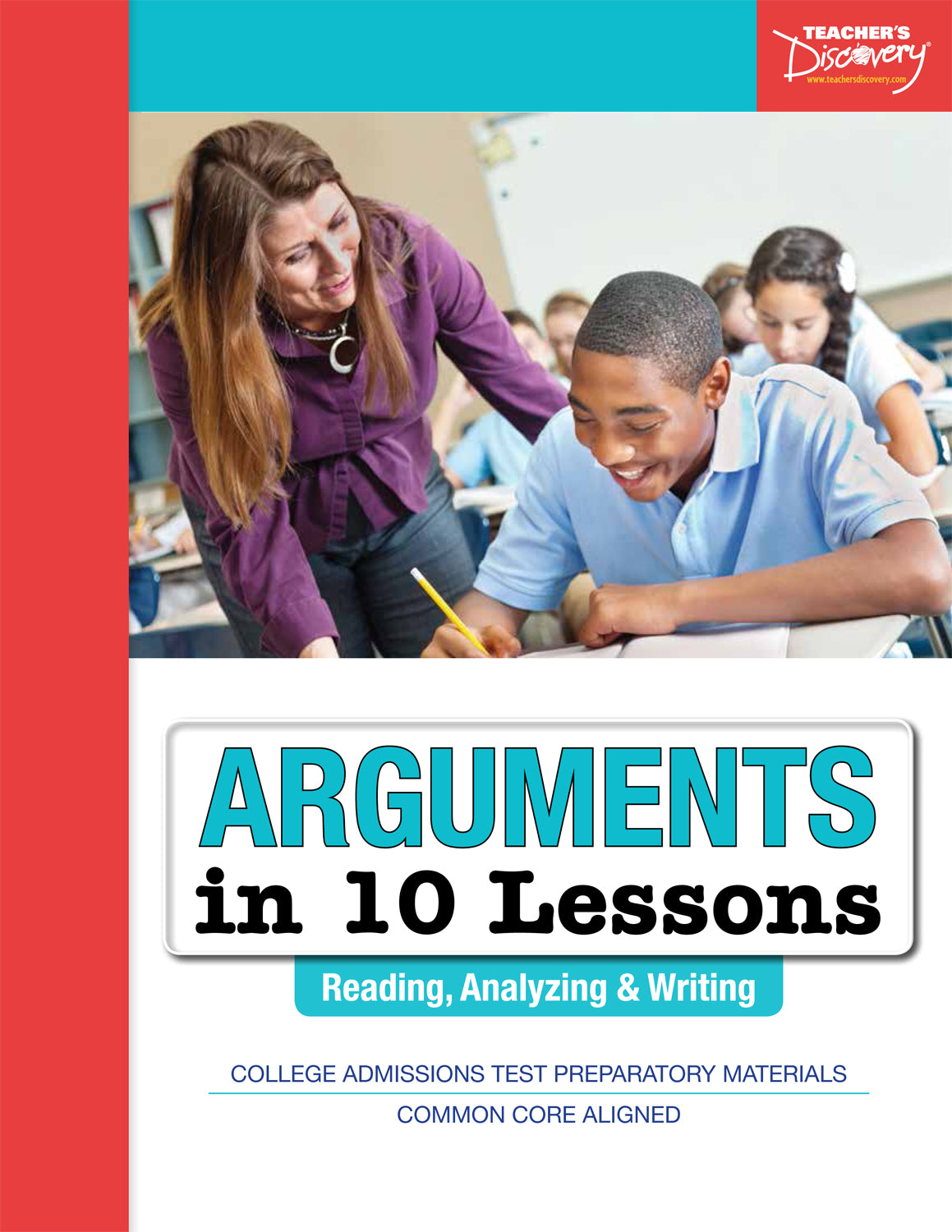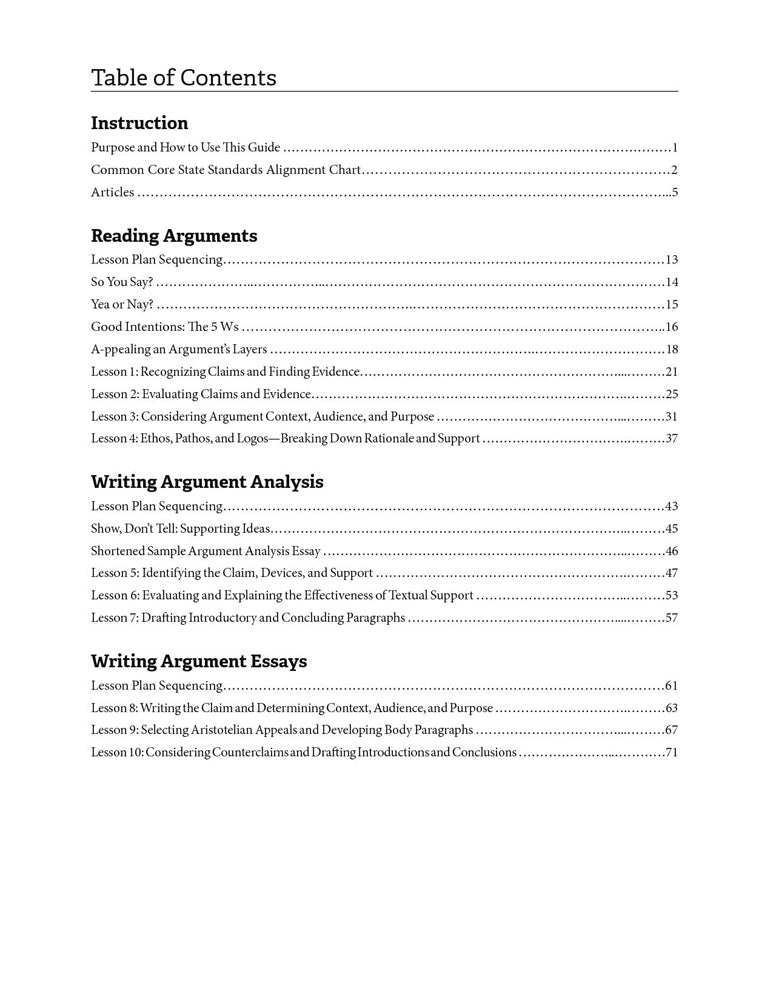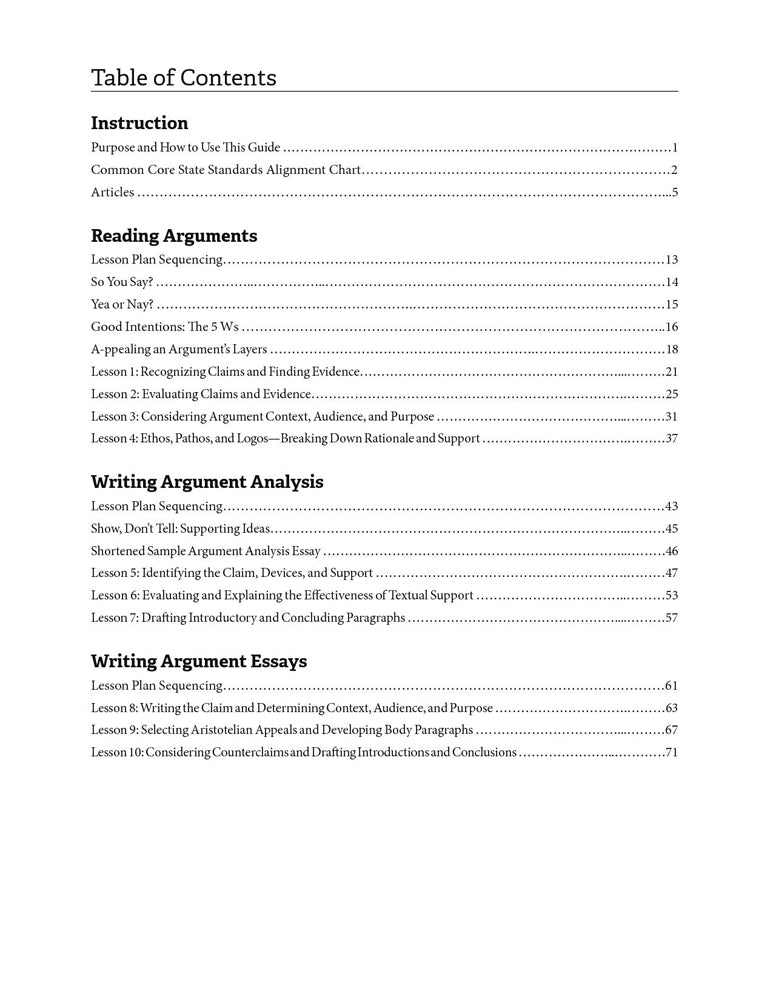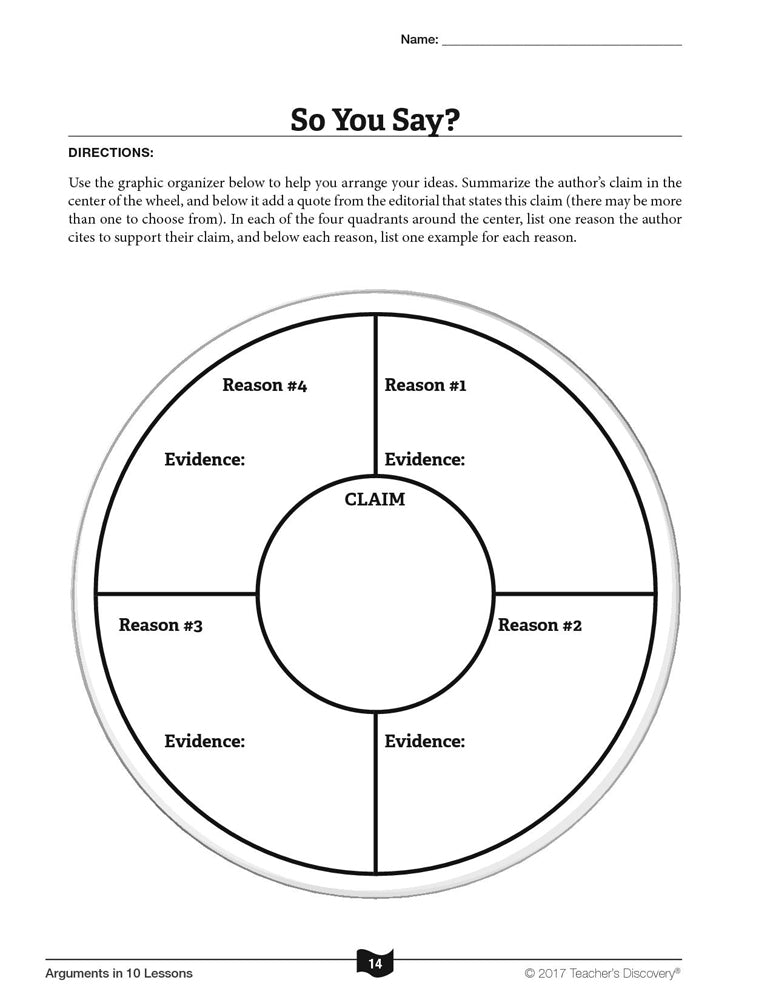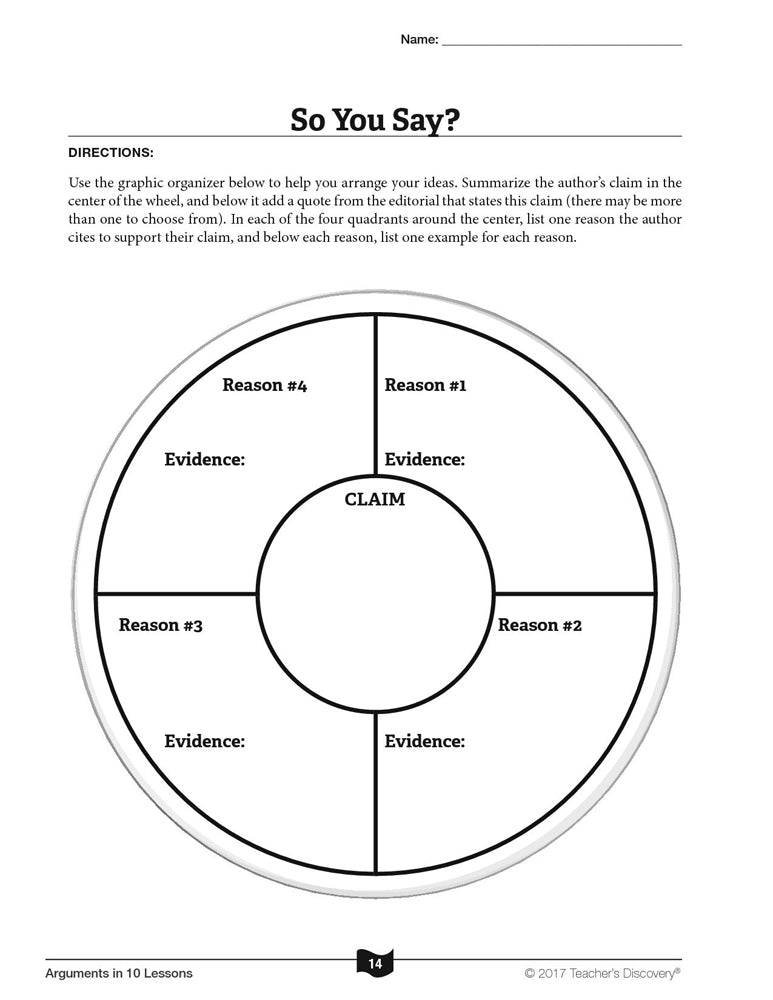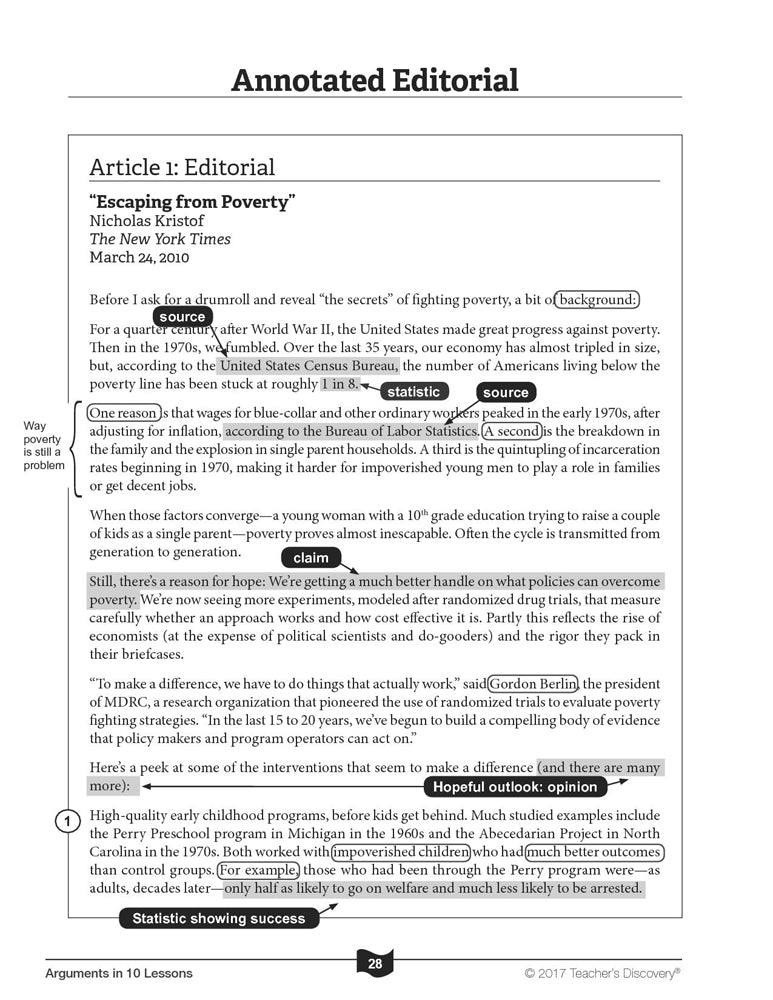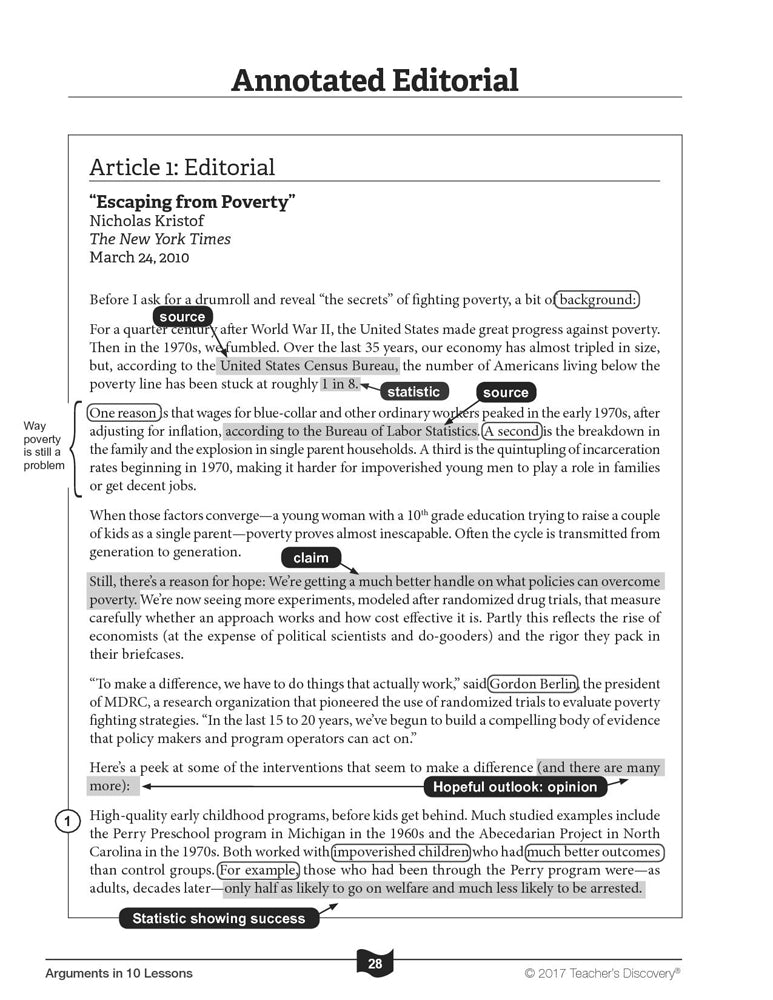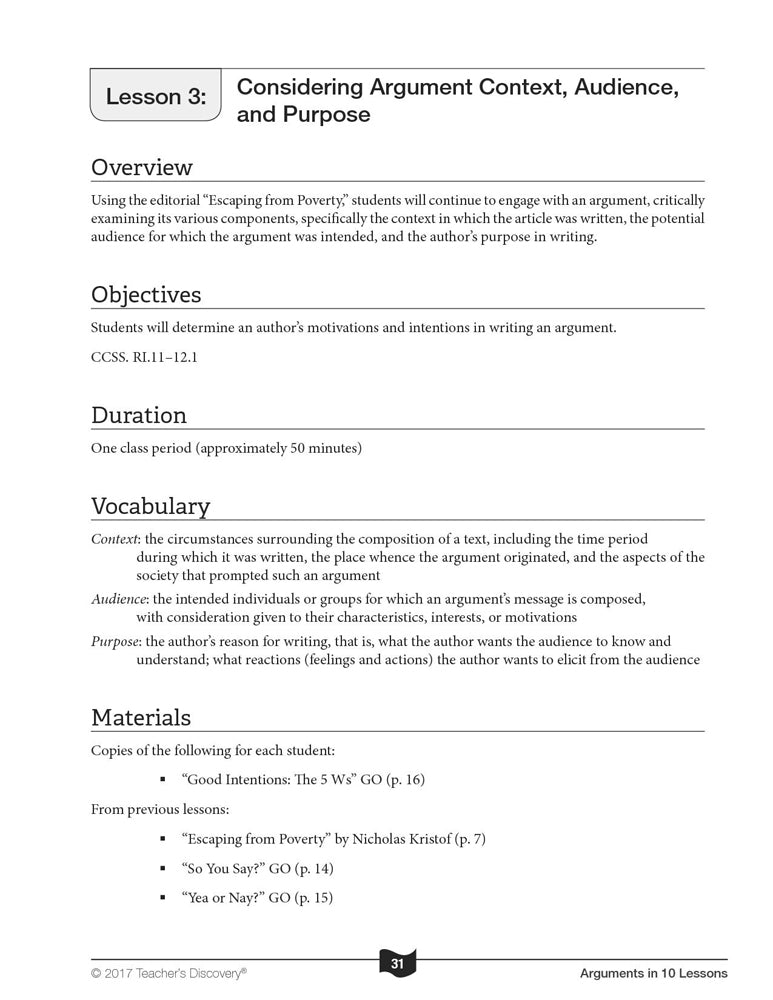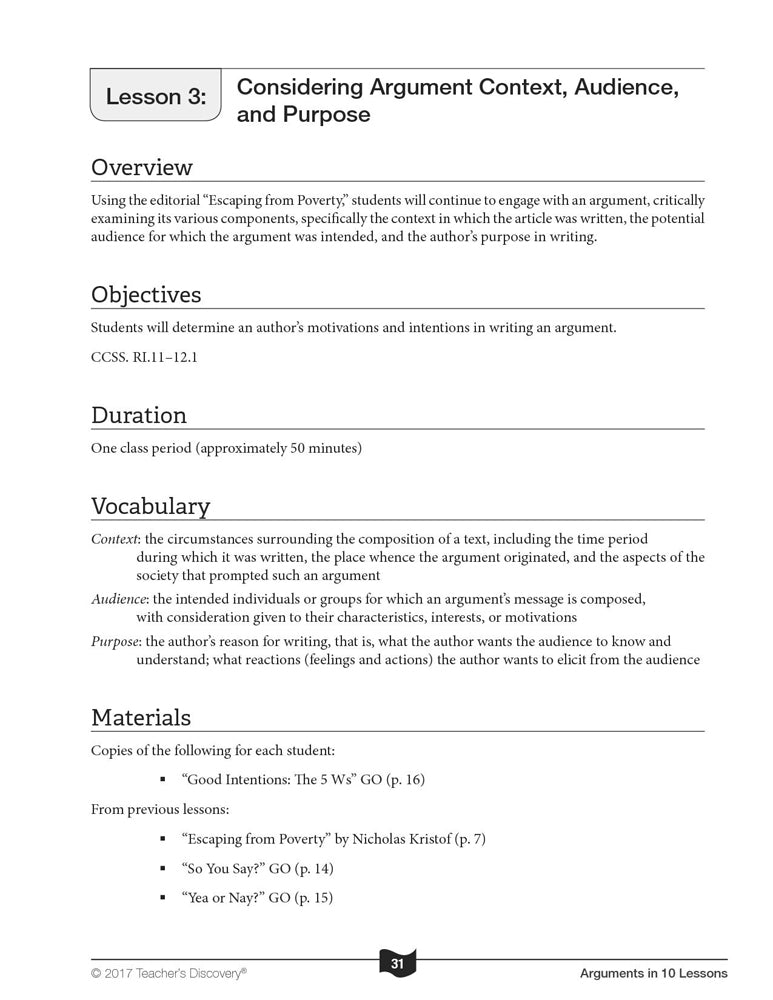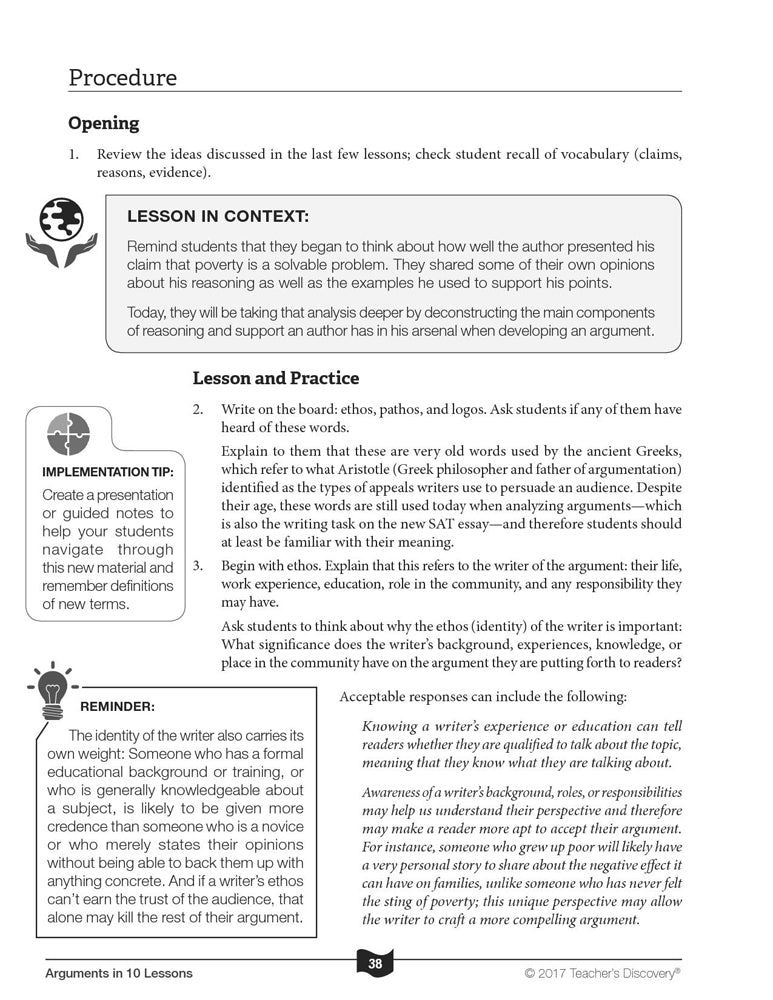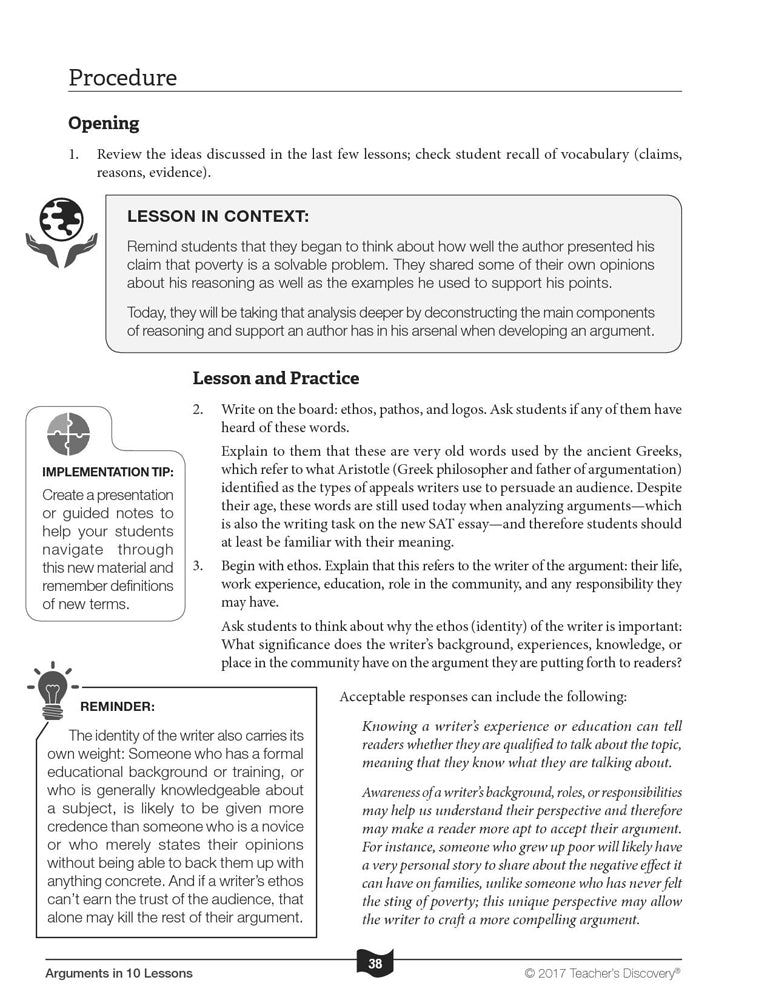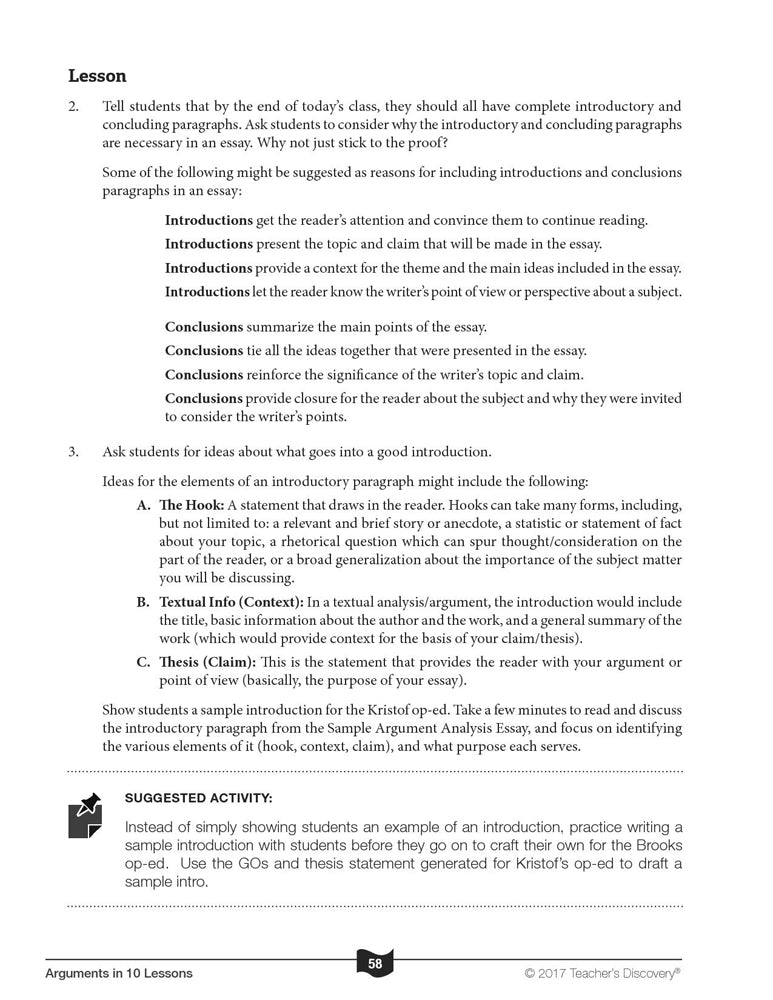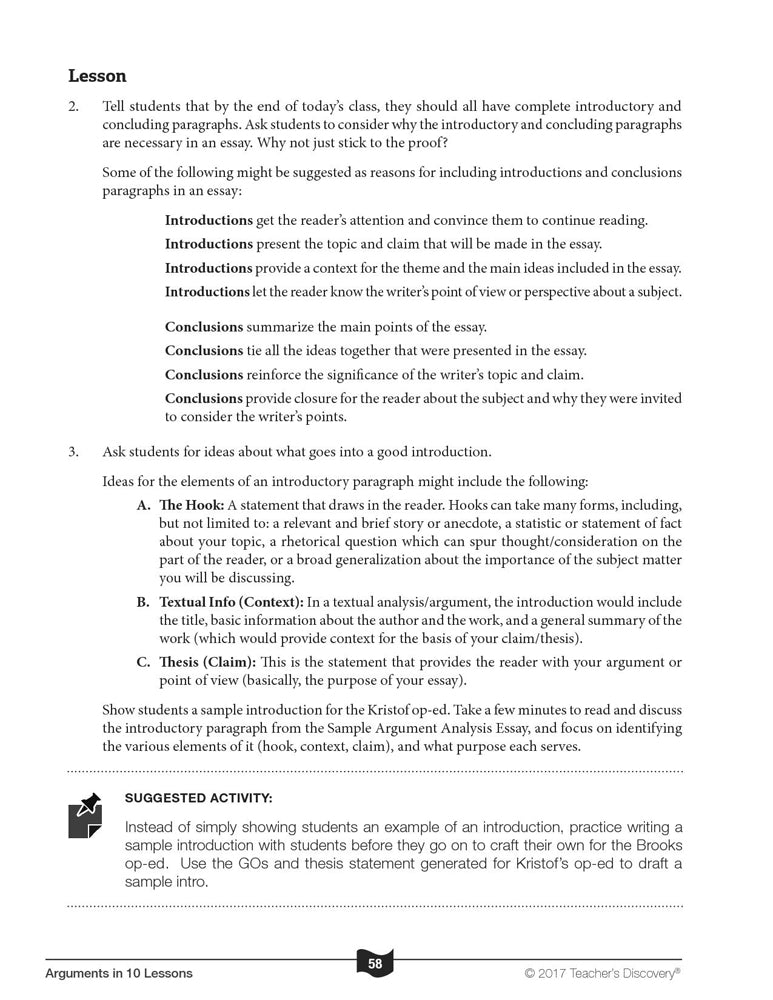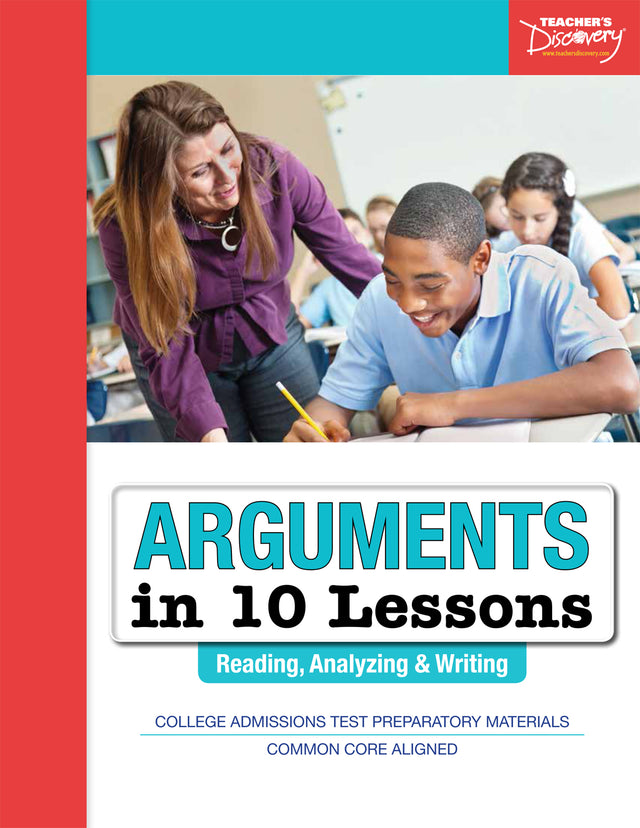Teach your students the skills required for the new SAT® essay with these 10 lessons and accompanying resources. Students use reproducible graphic organizers to read and understand argumentative texts, analyze argument development, and brainstorm their own!
- 5 Graphic Organizers
- 3 Practice Articles
- CCSS Alignment
- Student Objectives
- Samples of Completed Graphic Organizers
- Tips for Implementation and Suggested Activities
Lesson Topics:
- Recognizing Claims and Finding Evidence
- Evaluating Claims and Evidence
- Considered Argument Context, Audience, and Purpose
- Ethos, Pathos, and Logos—Breaking Down Rationale and Support
- Identifying the Claim, Devices, and Support
- Evaluating and Explaining the Effectiveness of Textual Support
- Drafting Introductory and Concluding Paragraphs
- Writing the Claim and Determining Context, Audience, and Purpose
- Selecting Aristotelian Appeals and Developing Body Paragraphs
- Considering Counterclaims and Drafting Introductions and Conclusions
Table of Contents
- Purpose and How to Use This Guide
- Common Core State Standards Alignment Chart
- Articles
- Lesson Plan Sequencing
- So You Say?
- Yea or Nay?
- Good Intentions: The 5 Ws
- A-ppealing an Argument's Layers
- Lesson 1: Recognizing Claims and Finding Evidence
- Lesson 2: Evaluating Claims and Evidence
- Lesson 3: Considering Argument Context, Audience, and Purpose
- Lesson 4: Ethos, Pathos, and Logos--Breaking Down Rationale and Support
- Lesson Plan Sequencing
- Show, Don't Tell: Supporting Ideas
- Shortened Sample Argument Analysis Essay
- Lesson 5: Identifying the Claim, Devices, and Support
- Lesson 6: Evaluating and Explaining the Effectiveness of Textual Support
- Lesson 7: Drafting Introductory and Concluding Paragraphs
- Lesson Plan Sequencing
- Lesson 8: Writing the Claim and Determining Context, Audience, and Purpose
- Lesson 9: Selecting Aristotelian Appeals and Developing Body Paragraphs
- Lesson 10: Considering Counterclaims and Drafting Introductions and Conclusions
©2017. High school. Reproducible. 77 pages.
Book Download: PDF. We recommend Foxit PDF for viewing or editing PDFs.
Print Book: Spiral-bound, 8 x 11 inches.
Arguments in 10 Lessons Book
Arguments in 10 Lessons Book - Arguments in 10 Lessons Book Download is backordered and will ship as soon as it is back in stock.
Couldn't load pickup availability


Ace the SAT Essay in Just 10 Lessons!
Description
Description
Teach your students the skills required for the new SAT® essay with these 10 lessons and accompanying resources. Students use reproducible graphic organizers to read and understand argumentative texts, analyze argument development, and brainstorm their own!
- 5 Graphic Organizers
- 3 Practice Articles
- CCSS Alignment
- Student Objectives
- Samples of Completed Graphic Organizers
- Tips for Implementation and Suggested Activities
Lesson Topics:
- Recognizing Claims and Finding Evidence
- Evaluating Claims and Evidence
- Considered Argument Context, Audience, and Purpose
- Ethos, Pathos, and Logos—Breaking Down Rationale and Support
- Identifying the Claim, Devices, and Support
- Evaluating and Explaining the Effectiveness of Textual Support
- Drafting Introductory and Concluding Paragraphs
- Writing the Claim and Determining Context, Audience, and Purpose
- Selecting Aristotelian Appeals and Developing Body Paragraphs
- Considering Counterclaims and Drafting Introductions and Conclusions
Table of Contents
- Purpose and How to Use This Guide
- Common Core State Standards Alignment Chart
- Articles
- Lesson Plan Sequencing
- So You Say?
- Yea or Nay?
- Good Intentions: The 5 Ws
- A-ppealing an Argument's Layers
- Lesson 1: Recognizing Claims and Finding Evidence
- Lesson 2: Evaluating Claims and Evidence
- Lesson 3: Considering Argument Context, Audience, and Purpose
- Lesson 4: Ethos, Pathos, and Logos--Breaking Down Rationale and Support
- Lesson Plan Sequencing
- Show, Don't Tell: Supporting Ideas
- Shortened Sample Argument Analysis Essay
- Lesson 5: Identifying the Claim, Devices, and Support
- Lesson 6: Evaluating and Explaining the Effectiveness of Textual Support
- Lesson 7: Drafting Introductory and Concluding Paragraphs
- Lesson Plan Sequencing
- Lesson 8: Writing the Claim and Determining Context, Audience, and Purpose
- Lesson 9: Selecting Aristotelian Appeals and Developing Body Paragraphs
- Lesson 10: Considering Counterclaims and Drafting Introductions and Conclusions
©2017. High school. Reproducible. 77 pages.
Book Download: PDF. We recommend Foxit PDF for viewing or editing PDFs.
Print Book: Spiral-bound, 8 x 11 inches.
Reviews (0)
Reviews (0)
Payment & Security
Payment methods
Your payment information is processed securely. We do not store credit card details nor have access to your credit card information.

